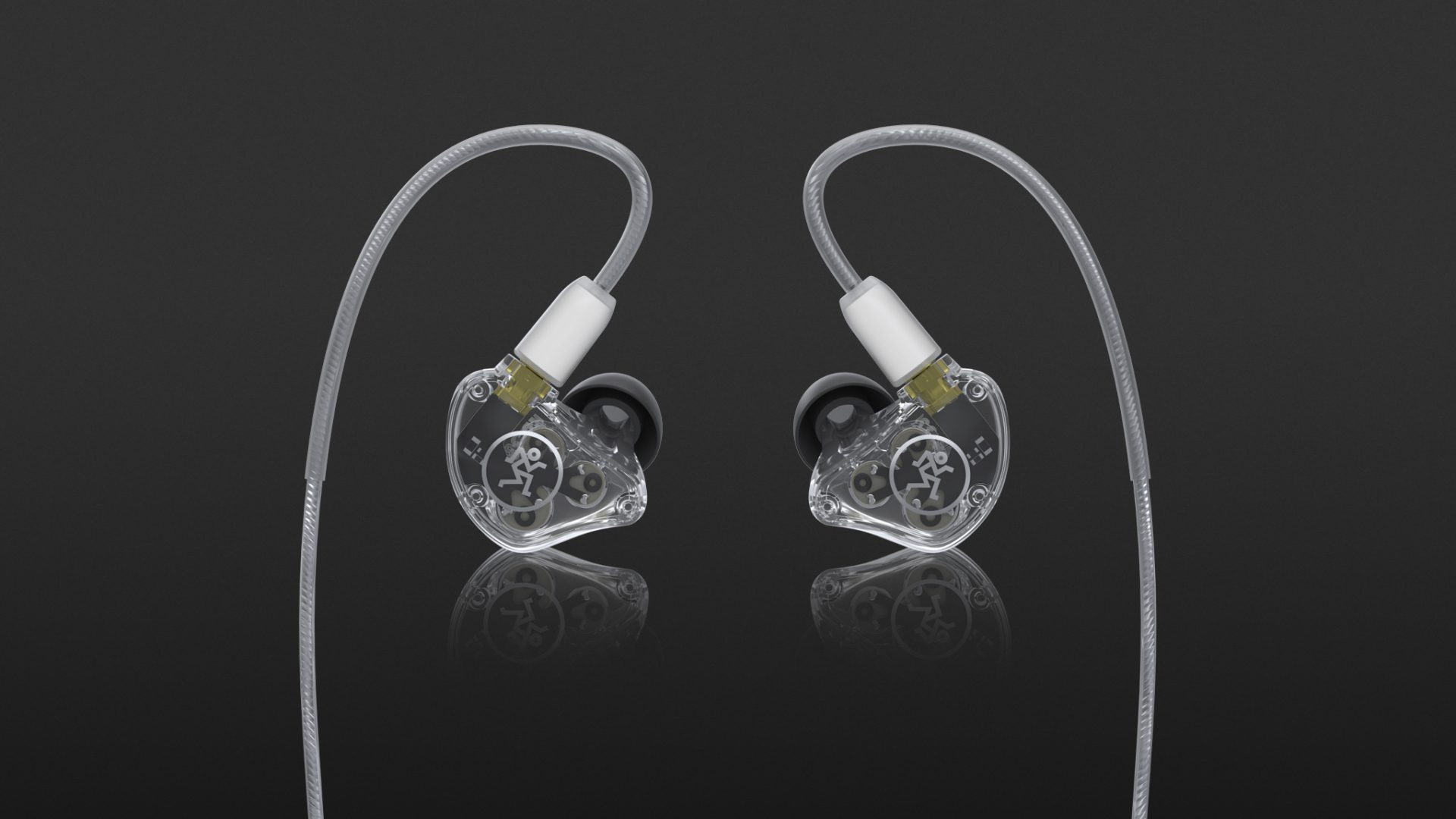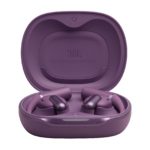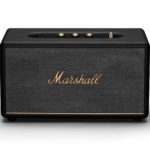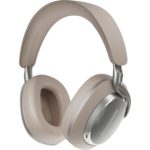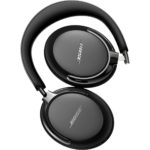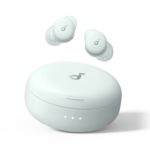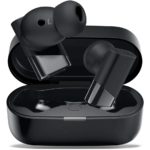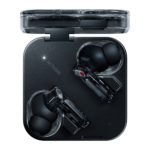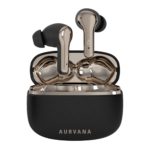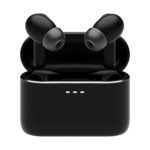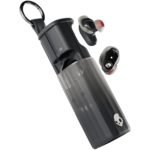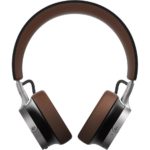Mackie promotes their MP series as in-ear-monitor headphones for singers and musicians. The “P” in the name stands for performance, in the sense of an artistic performance “on stage” and that’s where I see the MP-320 working best, especially in the ears of drummers and bassists. The dynamic 3-way system sounds powerful and – apart from the small 2.5 Hz boost – quite universal. The MP-320 will also please the music consumer, but off stage, the “behind-the-ear” fit of the cable will not be everyone’s cup of tea, particularly for those who wear glasses.
So, will Mackie manage the balancing act between musician’s equipment and everyday headphones? I think so, especially in combination with the practical Bluetooth adapter MP-BTA, which brings the IEM sound to the streets!
I remember when I had the pleasure of testing Mackie’s first three in-ear headphones about two years ago: The MP-120 , the MP-220 and the MP-240 were aimed at musicians and sound engineers who were looking for monitor headphones for use on stage, with FoH/monitor mixing desks or in the recording studio. Now Mackie has added three more technically advanced headphones to the MP-series: The MP-320 that I am testing here is higher in the price hierarchy than the MP-240 and the most affordable of the three new ones.
Mackie are attempting a balancing act: with the MP-320, the manufacturer wants to close the gap between professional in-ear-monitor headphones (IEM for short) and Smartphone-compatible everyday headphones. This is an understandable move, because if you are used to the excellent sound of their IEMs, you will also want to enjoy it off stage. For the MP-320 and the others in the MP series, Mackie has developed the optional MP-BTA Bluetooth adapter, which turns this professional tool into a wireless earpiece. We now take a look at how this combination performs in practice.
Three ways, dynamic
In contrast to the previous MP-headphones with their shiny black housings, the transparent ear cup of the MP-320 allows you to see the driver technology: If you look closely, three small loudspeakers can be detected. With the MP-320, Mackie relies on proven dynamic drivers and does not use balanced-armature drivers, which are usually found in high and higher quality IEMs. This might lead you to expect an exciting listening test at any rate! But first, the right ear tips have to be found.
Good fit = good sound
For in-ear headphones, good sound always starts with a good fit: the bass can only develop fully if the earplugs seal the ear canal tightly. Mackie has always been aware of this, and so the MP-320 comes with a generous selection of ear tips: You can choose your personal favourite from four different earpieces, each in three sizes: in addition to standard silicone, there are also Christmas tree-shaped earplugs and a set of Comply foam pads. As with previous MP headphones, changing the ear tips on the MP-320 is extremely tricky because of the large sound outlet. Particularly at the beginning, a few choice words might be issued from your lips when you want to try out different ear pads. By the way, I got the impression that the MP-320 reacts very sensitively to the type and fit of the ear tips. You should, therefore take some time to test them thoroughly so that these headphones can develop their full sonic potential.
Accessories = exemplary
What Mackie includes in the box with the MP-320 is as generous as the ear tip selection: A sturdy hard-shell case for transport, including a carabineer; a 6.35 mm jack adapter, an additional black Smartphone cable with remote control and a small microfiber cloth as well as a tool for cleaning the headphones. This is simply exemplary!
Stage cables and street cables
On IEMs the cable is usually placed behind the ear, and the MP-320 can only be worn in this way. This is important for the musician on stage: as the headphone fit very securely and they can be removed from the ear quickly without dangling anywhere in front of the body or even on your instrument. For the spectacle wearers among us, the routing of the cable behind the ear may always be a little annoying, but you get used to it (or: you have to get used to it). The rotatable MMCX plugs are something like IEM standard and allow a quick cable change in case of a defect. The MP-320 is delivered with a high-quality transparent cable plugged in; I call it the “stage cable” and it has the appearance of being very durable.
The “street cable” is black, looks very stylish and has a remote control, including a hands-free microphone for making telephone calls. Both cables are pleasantly impervious to handling noise and structure-borne noise.
So does the balancing act work – can you change the cable for use on the way home – is it really possible? Of course, it does work, but it caused me a bit of a bellyache. Experience has shown that the MMCX plugs wear out when constantly plugged in and unplugged, after which they don’t fit so securely. In fact, according to specifications, the MMCX connector is only designed for about 500 mating cycles. So you should not overdo it when changing cables on the MP-360.
Sound
As you would expect from a dynamic headphone, the MP-320 plays with a lot of pressure in the low frequencies. The bass line of Pharrell Williams’ “Get Lucky” sounds crisp and with a tight punch. The lower mids, on the other hand, remain a bit weak; the basic tone range should sound a bit warmer, in my opinion. But the MP-320 has strong upper mids and a small boost at about 2.5 kHz, i.e. in the sensitive frequency range where the vocals are playing. From the point of view of singers, who need to hear themselves well on stage, this is good news. From the point of view of the music listener this is rather less great. John Mayer’s Stratocaster melody in “Slow Dancing in a Burning Room” for example sounds unusually sharp on the MP-320. The MP-320 doesn’t reach the very high frequencies, and for my taste a bit more could be done above 10 kHz (especially as a counterpart to the strong upper mids).
However the MP-320 really surprised me with a very nice stereo image! The instruments and voices are very defined and can be located exactly in the stereo image. The lack of high frequencies is noticeable in the spatial depth, i.e. the representation of reverb effects, but the MP-320 still offers the listener a wide sound stage and you never have the feeling that the music is playing between your ears.
Bluetooth adapter MP-BTA
If you want to enjoy this sound off stage, Mackie have developed the Bluetooth adapter MP-BTA. It doesn’t turn the MP-320 into true wireless headphones, but at least you don’t have to plug the cable into your Smartphone. The adapter has two short leads – including a remote control and hands-free microphone for making telephone calls on the right cable – and a battery pack with a clip. The MP-BTA connected easily to my Smartphone and then allowed me to listen to music wirelessly for up to ten hours (the adapter is charged via micro-USB cable). A practical detail: when you switch it on, you are not given a percentage of the battery capacity, but a female voice announces the remaining battery life. The MB-BTA is up to date technically: It has the codecs SBC, AAC, aptX and aptX HD and supports Bluetooth version 5.0.
By the way, it is rare to have the opportunity to directly compare the same in-ear headphones in both cable and Bluetooth modes: In reality, the MP-320 sounds a little different when used with the adapter. I got the impression that the stereo image was a bit narrower and the signals lost some precision, but these were very small differences. What bothered me more in practice was that the remote control was mounted quite high up on the cable. Since the adapter cables are also designed to be placed behind the ear, the remote dangles relatively high up directly under the chin and cannot be seen clearly by the wearer.
While we’re here, there is nothing to say that you can’t use the MP-BTA adapter with headphones from other manufacturers as long as they are also equipped with MMCX connectors.
Technical specifications
- Ear couplingIn-ear
- Typeclosed
- Transducer principledynamic
- Frequency response (headphones)20 - 20.000 Hz
- Impedance15,5 ohms
- Sound pressure level (SPL)±3dB, 1mW at 1KHz: 100 dB
What's in the box
- 4 types of eartips in 3 sizes each
- Cable with MMCX connection
- Cable with remote
- 6.35mm stereo jack
- Microfibre cloth
- Cleaning tool
- Hard-case
Special features
- Bluetooth cable MP-BTA sold separately



